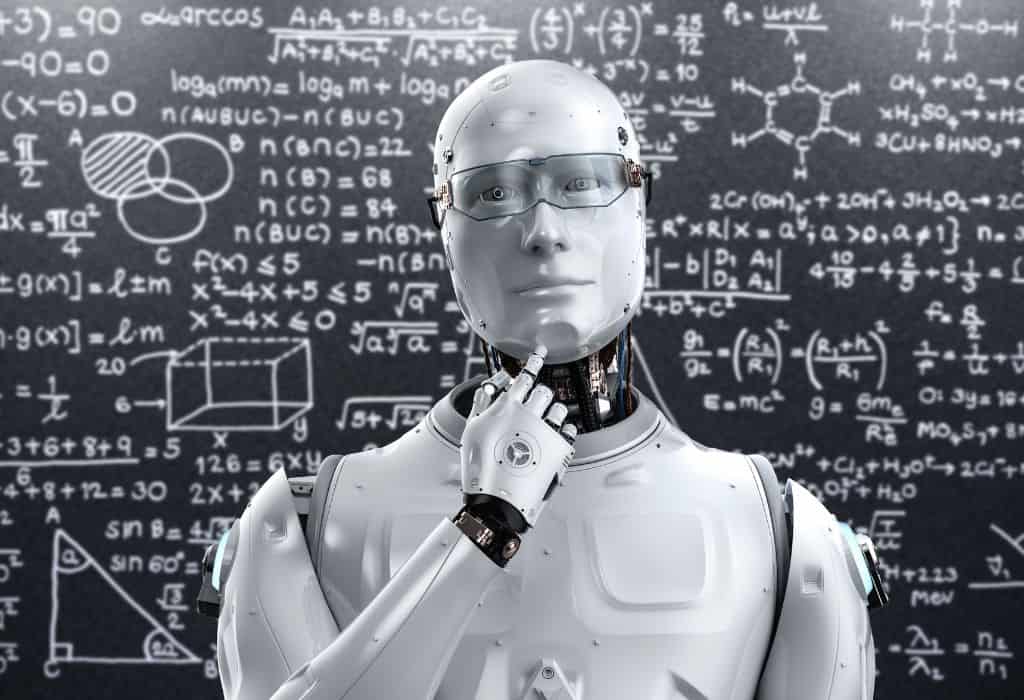With all the talk about artificial intelligence (AI) taking over the world, you may be wondering what the difference is between all the concepts being tossed around these days: machine learning vs. AI or AI vs. machine learning vs. deep learning. What do all these things mean, and how are they different? Or are they all the same?
Machine Learning vs. AI: The Big Difference
The biggest difference between machine learning (ML) versus artificial intelligence (AI) is that machine learning is a part of AI.
Artificial intelligence is an umbrella term for describing a machine that can think on its own. While today’s AI is nowhere near that level of intelligence, when we talk about AI, we’re talking about an algorithm that’s been trained to analyze large sets of data to find patterns and make predictions.
Machine learning is one method of training an AI to “think” like a human through testing, updating, and fine-tuning the algorithm. Early artificial intelligence was built on machine learning, and you likely interact with it regularly. As an example, when you watch something on YouTube, you’ve probably noticed the suggestions list on the right of the screen. What you click and don’t click improves the suggestions you see on the next screen. That’s machine learning in action!

GenAI
Get a head start on your career in AI with this free course from BCG. Develop an AI-powered chatbot that can analyze financial data and provide insights.
Avg. Time: 3-4 hours
Skills you’ll build: Excel, Python, NLP, Jupyter, logic, chatbot development
What Are the Different Types of AI?
As of now, there’s only one type of AI, narrow AI, sometimes called weak AI. Narrow AI is trained to complete a specific task and can’t do anything outside of said task. One example of weak AI is the “for you” suggestions from TikTok.
TikTok’s algorithm makes suggestions based on several factors, like what you engage with, the hashtags you follow, and so on. But the algorithm can’t do anything outside of suggesting another video for you to watch. To be clear, TikTok may also suggest creators to follow, but that’s usually another algorithm at work.
There are also two types of theoretical AI. Those are:
- General or strong AI. This AI uses what it’s already learned to complete new tasks without human assistance. An example would be if Siri (an AI) could learn how to drive your car.
- Super AI. In theory, super AI could think, reason, and judge just like a human.
What Are the Different Types of Machine Learning?
There are three main types of machine learning:
- Supervised machine learning: the algorithm is trained on a labeled dataset.
- Unsupervised machine learning: the algorithm is given unlabeled datasets and learns how to find patterns and predict outcomes.
- Reinforced learning: the algorithm is trained with some human intervention and reinforcement. When the model gets something right, it’s rewarded, say, given a point. When it’s wrong, a point is subtracted. Over time, the model learns which answers are right, and this improves its predictions.
There are also semi-supervised learning and self-supervised learning, which overlap some of the above training techniques using labeled and unlabeled data sets.
>>MORE: Prompt Engineering Is the New ChatGPT Skill Employers Are Looking For
No matter what kind of machine learning is used, they all have the same end goal: to train the algorithm to discover hidden patterns and make accurate predictions.
AI vs. Machine Learning vs. Deep Learning
What about AI versus machine learning versus deep learning? Well, deep learning is a subset of machine learning!
Deep learning uses a specific type of algorithm that’s modeled on the human brain called a neural network. It tries to automate certain tasks, such as describing images or creating a written transcription from audio text.

Data Science
See what it's like to work as a data scientist in this free course from BCG. Learn more about framing business problems, understanding a business through data, and more.
Avg. Time: 6-7 hours
Skills you’ll build: Data visualization, hypothesis framing, model evaluation, programming
While early iterations of AI used machine learning, newer types of AI are modeled on deep learning, like ChatGPT.
What Skills Do I Need for a Career in AI vs. Machine Learning?
No matter what kind of AI career you want to pursue, you’ll need a solid mix of hard and soft skills to get the job done. And since machine learning is a part of AI, the skillsets you’ll need to land these roles are the same.
>>MORE: How to Get Into Artificial Intelligence
Hard Skills
While you probably won’t be surprised by some of the necessary hard skills for a career in AI, here are some of the most important ones you’ll need.
Programming
While working with AI, deep learning, or any of the other training methods isn’t quite the same as software engineering, you should have a background in programming to understand what makes the algorithms run. Knowing programming languages like Python, Java, and R is helpful.
Big Data
Big data is, as the name implies, a large dataset. The set can include labeled and unlabeled data, and it can grow quickly. For example, the more people stream a particular show, the more data about the audience and the show is generated.
This is a good thing when it comes to training AI. The more data the AI has to work with, the more it learns and improves its predictions. As a human, you’re not expected to analyze big data, but you should understand what it is and how to use it to train AI.
Math
Math isn’t so much a skill as much as it is a broad subject, but you’ll need a solid mathematical foundation to work in AI or ML. The training algorithms are built on mathematical concepts, like statistics, probability, and calculus, so competence and confidence in these topics will help you build better algorithms.
Data Visualization
All of the training helps the AI analyze the vast amounts of data you give it, but what you’re ultimately hoping for is an output that’s logical. For example, if you ask ChatGPT to suggest five options for tonight’s dinner, those suggestions need to make sense.
While that’s an oversimplified example, it’s what data visualization is. As you train an AI, you also have to teach how to create answers that aren’t nonsensical or don’t help the end user.
Soft Skills
Though you’ll probably lean on your hard skills a lot, you might be surprised to learn your soft skills will be in demand just as much.
Critical Thinking
You’ll spend a lot of your time evaluating the output, tweaking the inputs, and refining the algorithm. Does the output make sense? If it’s off, what’s off about it? Why do you think it’s off, and how will you fix it? Answering these questions requires solid critical thinking skills to identify where things have gone wrong.
Problem-Solving
In addition to critical thinking skills, you’ll need problem-solving skills to fix whatever’s wrong. The math could be wrong, there could be a typo in the programming, or you may need to dig even deeper and discover the dataset is labeled incorrectly.
Attention to Detail
Working in machine learning or AI also requires strong attention to detail. The tiniest typo could create the biggest problem, and it may be up to you to hunt it down.
Ethics
Finally, as AI continues evolving, you may find yourself faced with ethical quandaries. While it’s up to you to decide what direction to go, a strong moral compass can help guide you.
Machine Learning vs. AI: The Bottom Line
As it turns out, there isn’t much of a difference between AI versus machine learning versus deep learning versus anything else! AI, machine learning, and deep learning are all related concepts that have to do with teaching and training algorithms.
And if you want to see what it’s like to work in any of these fields, try out a free Forage job simulation. You can practice Python, learn how to create data visualizations, master machine learning, and more! Register today!
Image credit: Canva

